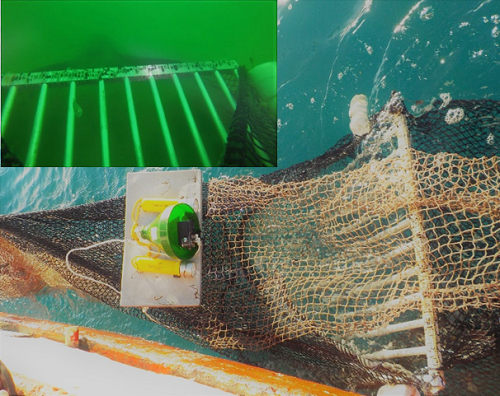Bycatch in the small-scale shrimp fishery in Northeast Brazil
Marine or freshwater, farmed or wild, shrimp is considered one of the most popular and valuable food in the world, being highly consumed globally. Although it is much appreciated by the culinary of several countries, the catch methods of the wild shrimp have been intensely criticized by environmentalists around the world.
 Different kinds of BRD used in Barra de Sirinhaém, Pernambuco, northeast Brazil. |
Trawler fisheries are highly efficient in capturing the target species “Shrimps” but it is also an unselective gear that commonly has an associated catch of various untargeted organisms (e.g. other fish, turtles, miscellaneous invertebrates). These catches, known as “bycatch”, are usually discarded mainly in large scale fisheries due to their small size or no commercial value. Their catch, however, in many instances in large quantities, may lead to adverse impacts on local populations and ecosystems, reducing the sustainability of fishery resources and the resilience of the marine ecosystem itself.
However, these impacts differ greatly between large and small-scale fisheries, with the industrial ones (large scale) accounting for great volumes of landings and consequently large volumes of discards. On the other hand, catches of small-scale fisheries, such as the one practiced in Pernambuco, northeast Brazil, are usually much lower and most of the bycatch is used by the local community as additional source of food and income, a situation that differs from many other regions of Brazil and of the world.
The environmental impacts of this fishing activity, however, are not negligible, since the fish bycatch, mainly composed by sardines, snappers and croakers, comprises primarily little-sized individuals.
The reduction of the bycatch in the shrimp-trawling fisheries, therefore, is essential for the survival of the activity. To achieve this objective, the use of bycatch reduction devices (BRD) has been considered a promising tool to significantly improve the sustainability of the fishery. In Pernambuco State, northeast Brazil, different kinds of BRDs have already been developed and tested, taking into account the efficiency in reducing bycatch, as well as the technical and economic viability for construction and use, in light of the daily reality faced by the fishers. The main technical devices used were the square-mesh, in the body of the net and in the codend, the fisheye, and an aluminum-made nordmore grid. The application of both the grid and the square mesh in the codend was able to reduce the bycatch by 41%. For some small species of sardines the reduction was above 60%, making this device very promising for reducing the unwanted catches of this modality of fishery. Further tests are, however, still necessary to better evaluate these devices in different environmental conditions and to reduce the loss of shrimp.
Written by Alex Souza Lira, Flávia Lucena Frédou & Vanildo Souza de Oliveira
 Detail of a aluminum-made nordmore grid BRD in the codend, used in Barra de Sirinhaém, Pernambuco, northeast Brazil |
